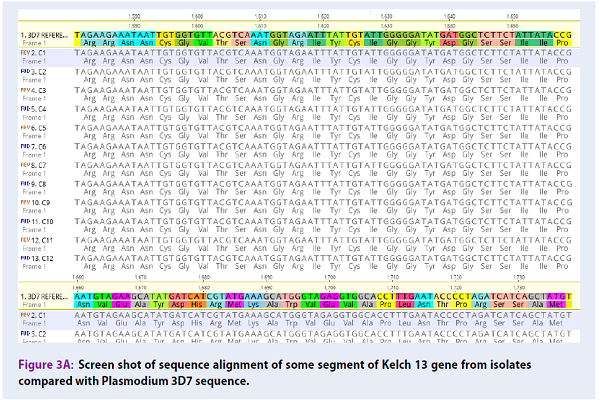Evaluation of Plasmodium falciparum K13 gene polymorphism and susceptibility to dihydroartemisinin in an endemic area
DOI:
https://doi.org/10.15419/bmrat.v5i9.474Keywords:
Artemisinin resistance, Kelch propeller gene, Nigeria, Plasmodium falciparum, RSAAbstract
Introduction: Plasmodium falciparum has developed resistance to artemisinin drugs in Southeast Asia, and its reduced sensitivity has been reported in other regions. This study aims to determine parasite susceptibility to the bioactive form of artemisinin derivatives- dihydroartemisinin (DHA)-, and to detect the K13 polymorphism in isolates from an endemic area of Nigeria.
Methods: Ex-vivo response in 55 parasites isolates obtained from malaria-positive patients were exposed to pulse DHA concentration and cultured for 66 hours ex-vivo. Parasite ring stage survival (RSAex-vivo) relative to unexposed matched control was determined by microscopy, and parasite growth was compared using Mann-Whitney U-test at a significance level of P<0.05. The Kelch propeller gene was amplified using specific primers, then sequenced and analyzed for single nucleotide polymorphisms (SNPs), which were compared to reference PF3D7_1343700.
Results: Overall, 151 of 375 (40.2%) individuals were positive during the study period. In 55 selected isolates, there was increased growth in unexposed wells but growth was inhibited in DHA-exposed wells, with growth rate between 14.9 – 96.7%. The mean RSAex-vivo value was 0.18 ± 0.09%, 95% CI (0.15-0.20). There was no significant mutation of the K13 gene in the parasite isolates evaluated.
Conclusions: Plasmodium falciparum isolates from this endemic area show high sensitivity to dihydroartemisinin ex-vivo, with no mutations conferring artemisinin resistance. Continuous monitoring of parasite susceptibility to artemisinin combination drugs should be intensified to reduce chances of artemisinin resistance in endemic areas.

Downloads
Published
Issue
Section
License
Copyright The Author(s) 2017. This article is published with open access by BioMedPress. This article is distributed under the terms of the Creative Commons Attribution License (CC-BY 4.0) which permits any use, distribution, and reproduction in any medium, provided the original author(s) and the source are credited.
